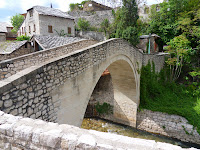Well, it turns out I had to go back to the Interior Ministry to get a temporary extension to my visa. My current visa expires this Saturday but that's OK. Rather...OK, as long as I stay in the ČR because if I were stopped for some reason by the foreign police, then they could verify that my new two-year visa is pending.
The catch is that I just found out I have to participate in an IBM seminar in Bratislava next week. Since both countries are part of the Schengen area there are no passport checks when traveling from one to the other. However, what if something were to happen while I was in Slovakia? Not too sure if the Slovak officials would contact the Czech Interior Ministry to make sure that I'm legal.
I was able to go to the ministry yesterday but had to wait for 4 hours because there were no appointments available. I explained that I needed a short-term extension on my visa to cover me until my new long-term visa is ready. After my 4 hours in line, it was a quick 15 minutes to get everything sorted. The clerk printed off a new visa sticker that is identical to the one I received last year except that my new expiration date is 1 July 2011. I didn't even have to pay anything for the temporary visa since the delay on my new permanent visa is due to the backlog generated by the recent change in application procedures. Hopefully, I'll get my new visa sometime in May.
The catch is that I just found out I have to participate in an IBM seminar in Bratislava next week. Since both countries are part of the Schengen area there are no passport checks when traveling from one to the other. However, what if something were to happen while I was in Slovakia? Not too sure if the Slovak officials would contact the Czech Interior Ministry to make sure that I'm legal.
I was able to go to the ministry yesterday but had to wait for 4 hours because there were no appointments available. I explained that I needed a short-term extension on my visa to cover me until my new long-term visa is ready. After my 4 hours in line, it was a quick 15 minutes to get everything sorted. The clerk printed off a new visa sticker that is identical to the one I received last year except that my new expiration date is 1 July 2011. I didn't even have to pay anything for the temporary visa since the delay on my new permanent visa is due to the backlog generated by the recent change in application procedures. Hopefully, I'll get my new visa sometime in May.































































